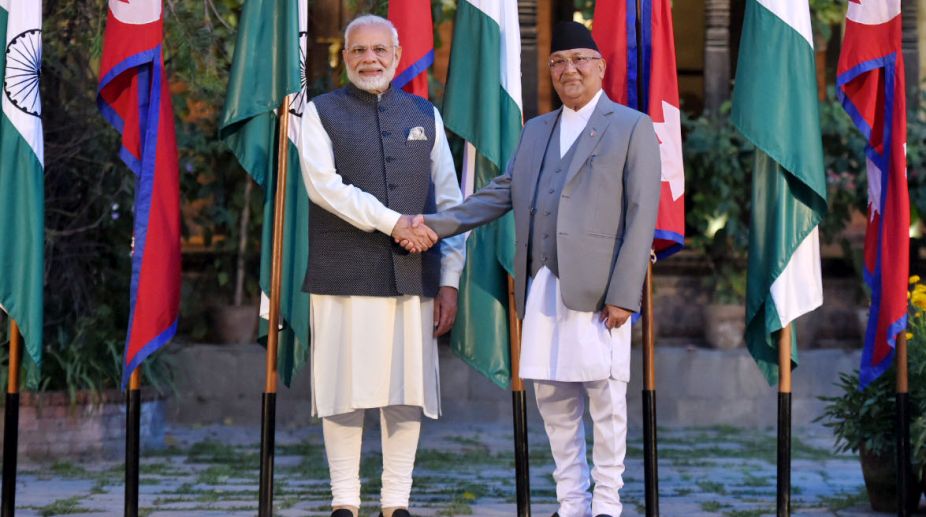Jahan-e-Khusrau: PM Modi to attend 25th sufi music festival in Delhi
Jahan-e-Khusrau, an international Sufi music festival, celebrates its 25th anniversary in Delhi with global artists honoring Amir Khusrau's legacy.

Prime Minister Narendra Modi and Prime Minister of Nepal, KP Sharma Oli in Kathmandu, Nepal in May 2018. (Photo: PIB/file)
After a roller-coaster phase in bilateral relations, there was a profoundly religious connotation to Narendra Modi’s recent visit to Nepal, his third since taking over as Prime Minister. So, when the high priest at Janaki Mandir ~ the holy of holies ~ marked the tilak on his forehead, it was more than the symbol of a robust faith.
More basically, connectivity and diplomacy have come together and the places of pilgrimage ~ the one in India is still a subject of controversy ~ is the thread that binds the two countries. Hence the pronounced emphasis by the two Heads of Government on the circuit of religious tourism.
Advertisement
It thus comes about that Mr Modi and his counterpart, KP Oli, have flagged off a bus service between Janakpur and Ayodhya. No less critical is the mythological link between the two places, as chronicled in the Ramayana.
Advertisement
Janakpur is said to be the parents’ place of Sita and Ayodhya the home to her in-laws. The orchestrated faith in the central theme of Ramayana was the striking feature of Mr Modi’s presentation ~ “Without Nepal, India’s faith is incomplete.
Without Nepal, India’s history is incomplete. Without Nepal, India’s temples are incomplete. Without Nepal our Ram is incomplete,” was the core of the Prime Minister’s address. Markedly, there was no hi-falutin joint statement emitting a signal of intent.
Mr Modi’s visit was marked by a strong emphasis on faith, exemplified by his visits to Janaki temple, Pashupatinath and Muktinath. The Janakpur-Ayodhya bus service, apart from improving connectivity, is a major forward movement in terms of promoting religious tourism.
Indubitably, this is a distinct change after a rough patch in relations during Mr Oli’s earlier stint as Prime Minister… when a border blockade two years ago over sub-regional jingoism had disrupted supplies of food and medicine, when India’s package of assistance in the aftermath of the devastating earthquake was turned down, and when Kathmandu appeared to be inching towards Beijing in terms of bilateral cooperation.
Despite the apparent proximity to Beijing, the religious bonding is no less critical in the overall construct. This was the profound message of the PM’s third visit. By using the Ram card, Mr Modi has attempted to ensure that the common religion can transcend the ideological factor in the Himalayan country.
No less important are the economic implications ~ the Rs 100-crore development plan for Janakpur, the inauguration of a 900 MW power project, and the plan for a railway link between Raxaul in Bihar and Kathmandu. The Hey Ram chant did not chime oddly in a partially Communist land, after all.
Advertisement